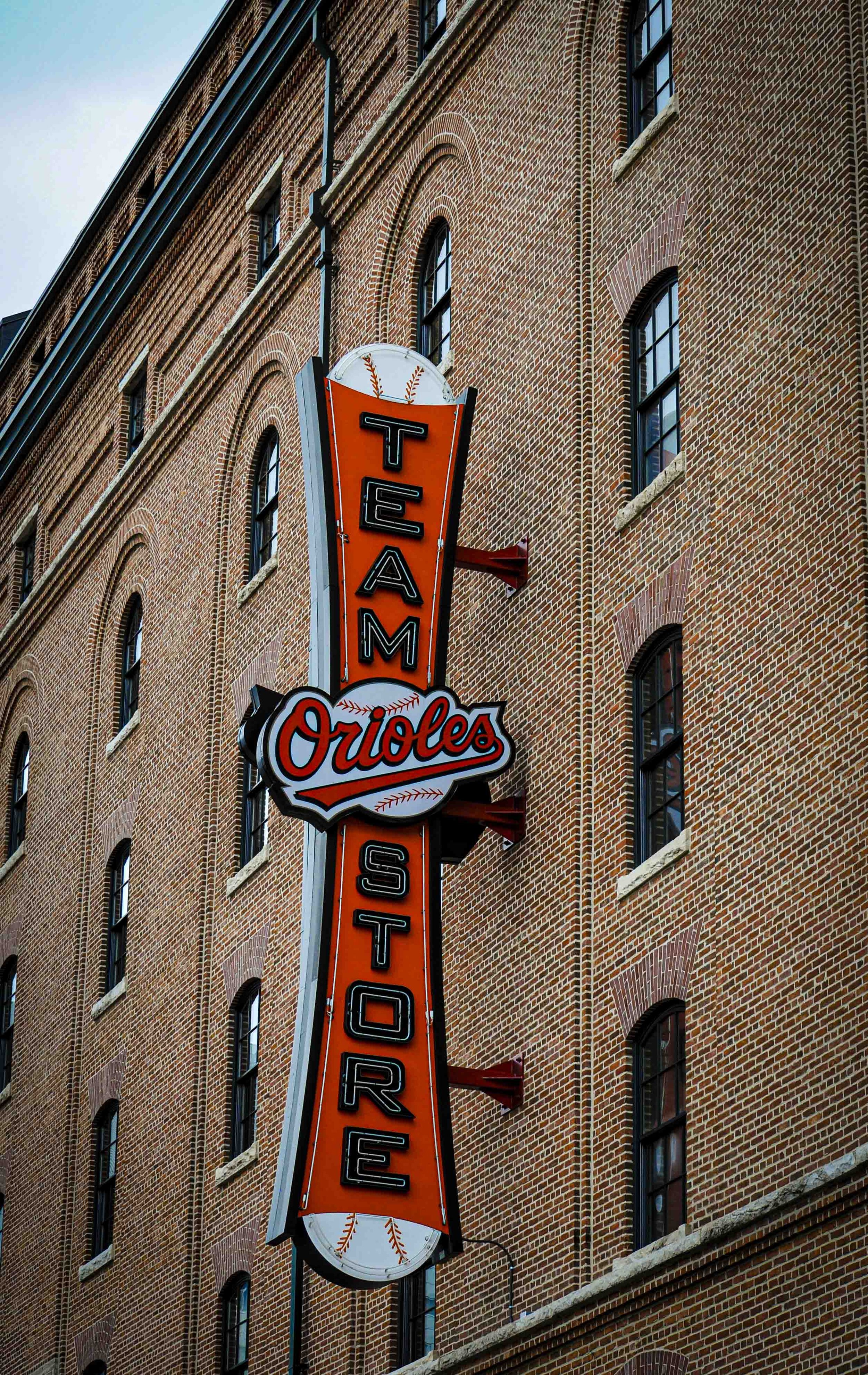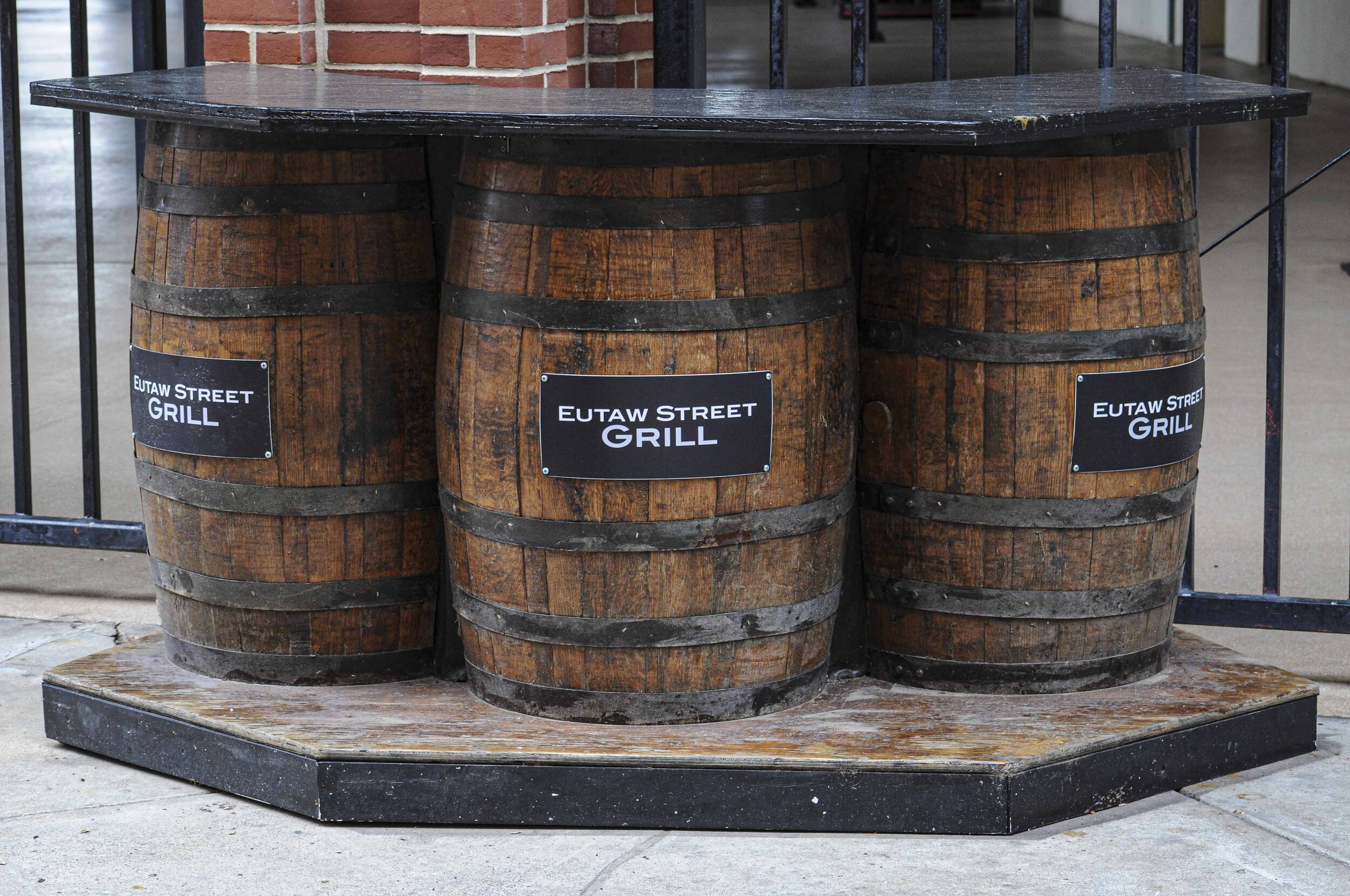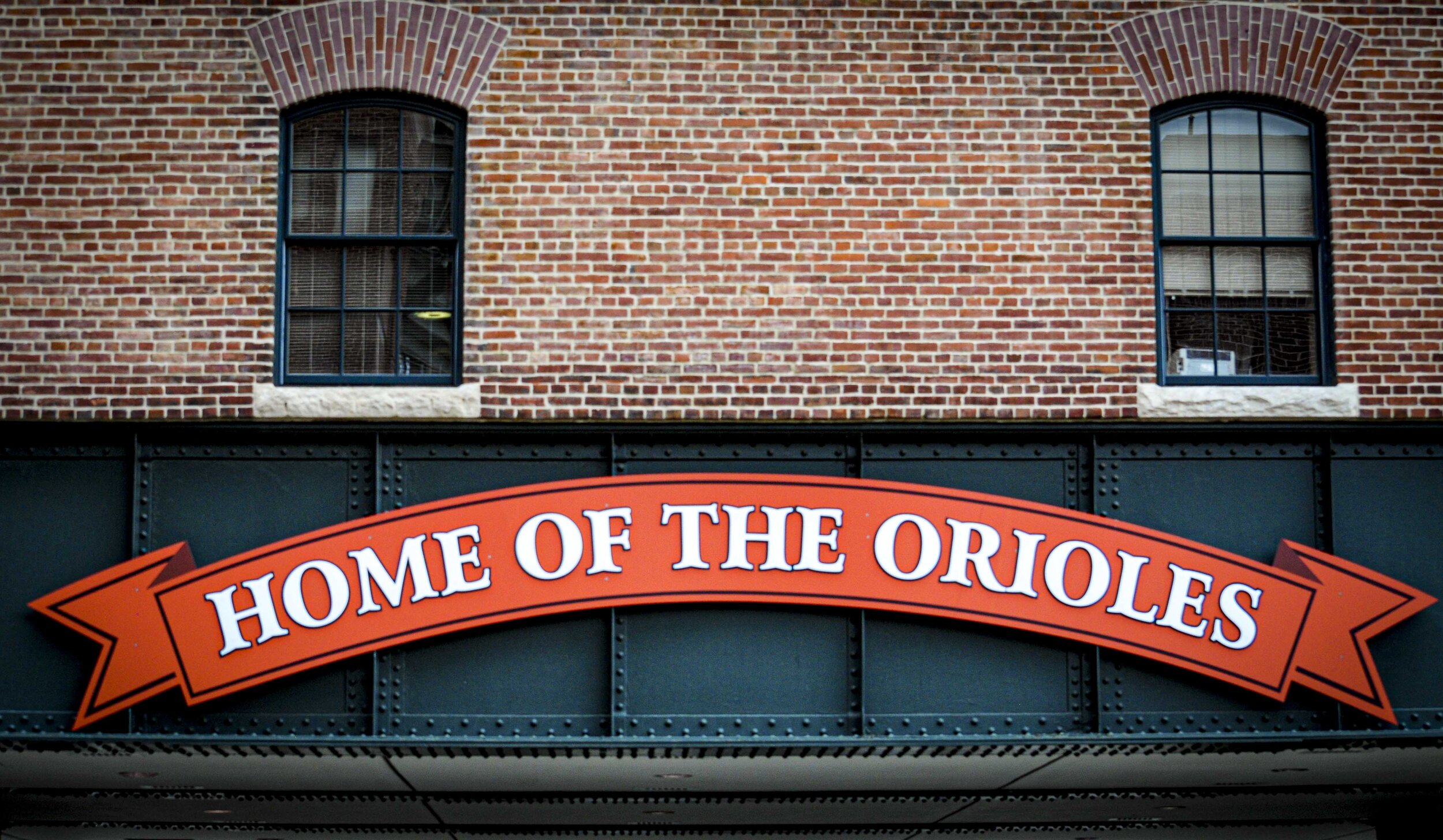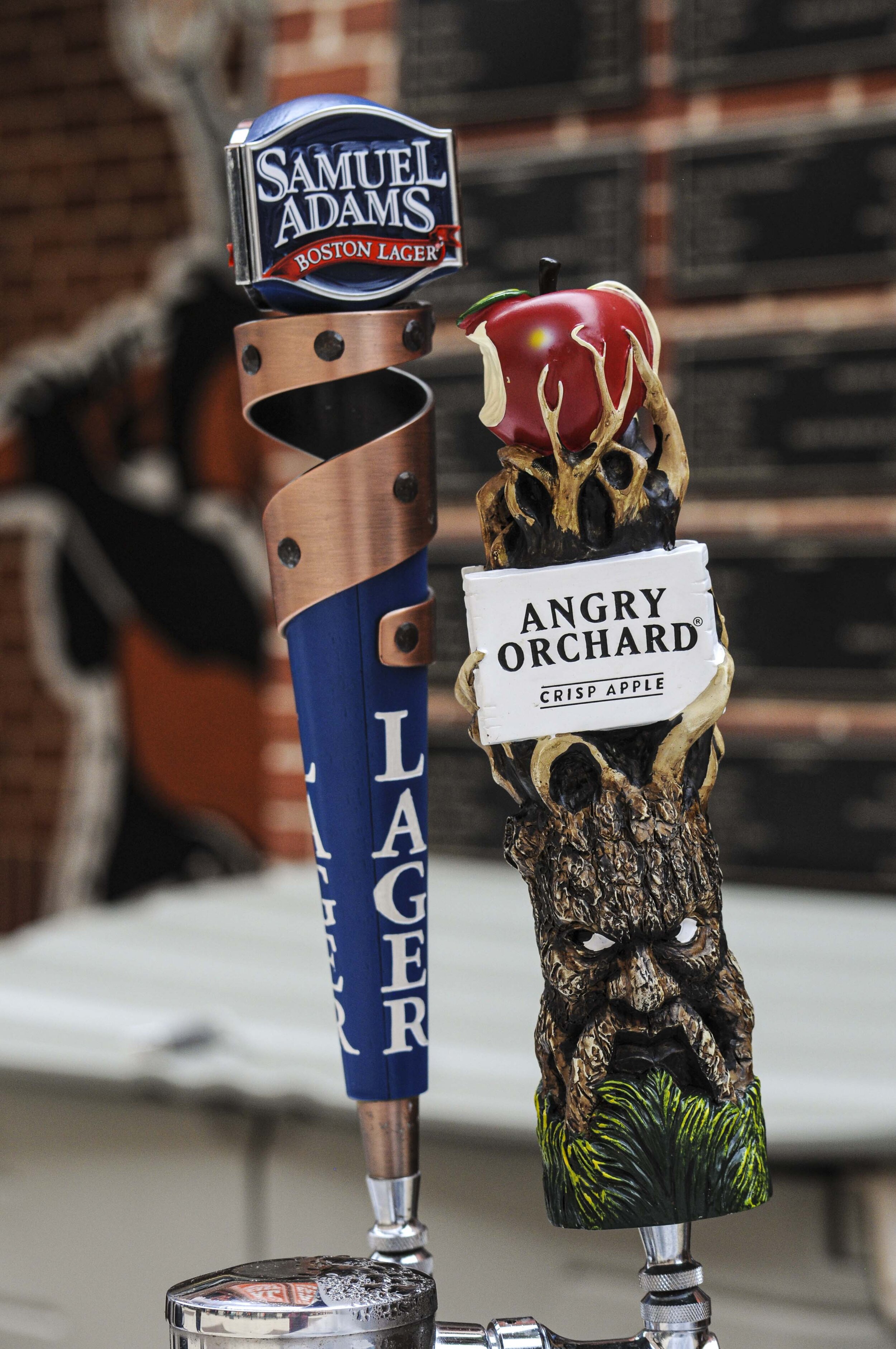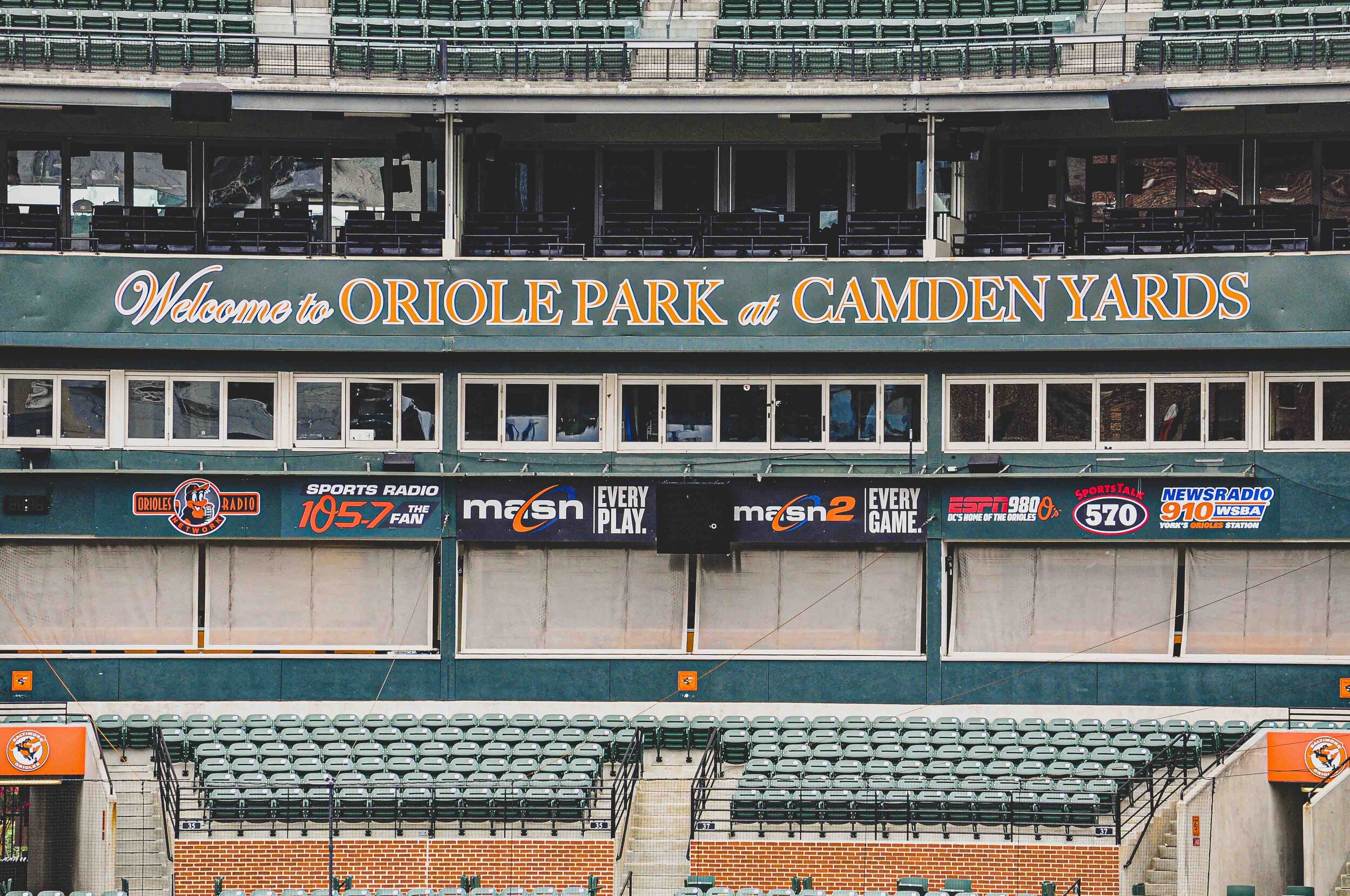History of Oriole Park at Camden Yards
Oriole park is the home stadium for the MLB team the Baltimore Orioles. The park was built in 1992 and it blends in with the Urban context of downtown Baltimore while taking its image from baseball parks built in the early 20th century.
Located beyond right field of the stadium, is the B&O Warehouse. The B&O Warehouse was constructed by the Baltimore and Ohio Railroad (B&O) beginning in 1899, with later sections completed in 1905. The warehouse is the longest building on the East Coast at 1116 feet long, but it is only 51 feet wide. The former B&O warehouse was incorporated into Camden Yards when it opened in 1992. The warehouse now serves as converted to team offices, team spaces, and a private club for the Orioles. It is also used for private wedding receptions.
The ballpark and warehouse are separated by a 60-foot-wide promenade, an extension of Eutaw Street which is closed to vehicular traffic. If you stand on Eutaw Street and look north, you will get a stunning view of the Bromo Seltzer Arts Tower. Which has been a Baltimore landmark since its construction in 1911 and was the tallest building in Baltimore at the time. The most interesting feature of the tower is the still-functioning tower clock, the face of which displays the word BROMO-SELTZER instead of numbers. The clock was the largest four-dial gravity-driven non-chiming clock in the world.


